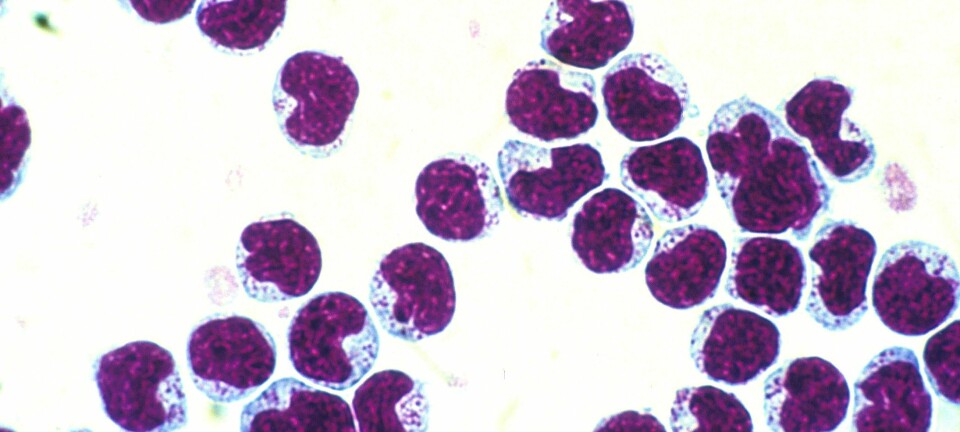
Liver transplants ten times better than chemotherapy
Transplantations can be lifesavers for many colon cancer patients with a spread of tumours to the liver. New research reveals that survival rates are ten times higher than treatment with chemotherapy.
Denne artikkelen er over ti år gammel og kan inneholde utdatert informasjon.
Transplant Surgeon Aksel Foss at the Oslo University Hospital had a daring idea one day in 2004.
He wanted to do something about the dire prognoses for colorectal cancer patients whose disease has spread to the liver. Five years after diagnosis, the survival rate was only five percent, despite treatment with chemotherapy.
He thought: “Why not replace chemotherapy with transplantation?”
In medical circles, this idea was a breach with all conventional principles. But Foss and his team dared to try.

In 2006 they tested the procedure in a pilot project, giving liver transplants to 21 patients.
Spike in survival rate
The results were remarkably buoyant. Survivability rose significantly among the cancer patients who received new livers.
Morten Hagness has recently taken his PhD in transplantation surgery on the basis of the study.
Six out of every ten patients who received a new liver were still alive five years later. This is more than ten times the rate elsewise expected for colorectal cancer patients with liver metastases.

Among the 21 patients seven are now cancer free. The quality of life among the patients is also good.
The study is unique internationally. The results have triggered a new attitude toward liver transplants for cancer patients.
Liver transplantation is now viewed as the only treatment which can increase long-term survival.
Spreading in half the cases
In Norway, with its population of five million, about 3,600 persons a year are diagnosed with colorectal cancer. Half of these cancers spread to other organs – they metastasise – usually first to the liver.
The spread of tumours is often so pervasive that the surgical removal of affected part of the liver is not a viable option. Patients can count on some relief from chemotherapy, but the results are generally insufficient.
Unprecedented
The medical profession had for some time disregarded the idea of transplanting new organs to cancer patients. Patients who receive donor organs need to receive medications for the rest of their lives to prevent the rejection of the alien tissue.
Such drugs undermine the patients’ immune systems. Cancer patients need as tough an immune system as they can get.
Previous failures
Over 20 years ago, attempts were being made with liver transplants for this type of cancer. But a third of the patients died more or less in the operation room. Less than 20 percent were still alive five years after the transplant. So the method was dropped.
“We challenged an accepted medical truth and showed that it was wrong,” says Professor Aksel Foss, who was Hagness’s advisor at the University of Oslo’s Institute of Clinical Medicine.
New drugs
Medical and technical advances have been made since the mid-1990s. Mortality rates after liver transplants are now generally low.
New medicines have also been developed which supress the immune system while counteracting the cancer.
So Aksel Foss thought it worthwhile to give transplantation another go.
The survivability rate was well above what the researchers aimed for and it was dramatically higher than the outcome for such patients who must make do with chemotherapy.
“The first liver transplantation patient in 2006 survived nearly eight years after the operation,” says Morten Hagness.
No cancer explosion
The immunosuppressive drugs do not lead to such an eruption of the cancer as medical opinion feared. The apprehension among doctors was an outbreak of tiny, undetected beginnings of cancer elsewhere in the body. This does not occur to the anticipated extent.
The medical scientists think this has to do with the immune system being too strong and complex for a single factor such as an immunosuppressant drug to knock it out.
Many of the patients suffered relapses after the transplantation. A metastasis to the lungs, however, was slow in growing and the affected tissue could often be surgically removed.
Hoping to offer the treatment to many
The researchers hope to offer the treatment to many who need it. But donor livers are a limited resource, so transplants are prioritised to those who have the best long-term prognoses.
“In our material we found various factors which help in selecting the patients who have the most use for a liver transplant. This will raise their long-term prospects all the more,” says Hagness.
The doctors think some 50 to 100 patients in Norway can qualify for this treatment annually.
The cost of a liver transplantation is about the same as for chemotherapy, and the quality of life a patient can expect is considerably higher.
The project has been given financial support through 2018, and a new study has been launched. A study is also planned in cooperation with 20 medical research centres around Europe.
------------
Read the Norwegian version of this article at forskning.no
Translated by: Glenn Ostling


































